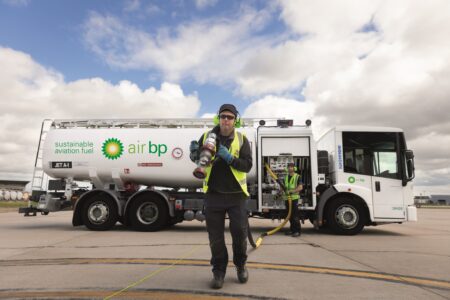By Simon Barnes, business development manager, airports EMEA at Genetec
Almost a year has already gone by since the notorious three day “Christmas chaos” at Gatwick Airport in the UK, where illegitimate drones managed to affect airport operations, effectively ruining the travel plans of over 120,000 passengers.
The wide-spread disruption the drones at Gatwick caused highlights the broad range of new threats airports have to navigate today, and has since led to drone detection and defence becoming firmly cemented onto the list of security procedures airport officials must undertake to keep the area safe. Protecting the perimeters and identifying “friend from foe” is more pressing than ever for airport personnel, who simultaneously have to uphold seamless operations for passengers.
Without this proactive approach, as seen by Gatwick, the results can be devastating. Over the three-day period around Christmas last year, more than 1,000 flights to and from Gatwick Airport were affected. The airport alone lost an estimated £20 million revenue, whereas associated businesses such as retailers, hotels and taxis also suffered significant losses.
Counter-drone technology
To stop any Gatwick-style events from happening in the future, the UK police is planning to boost its detection and disruption “counter-drone” strategy units, in an effort to eliminate the damaging use of drones at airports. Any unidentified objects will be brought down and destroyed by police with the use of new tools such as electronic jamming equipment, specialised bazookas and laser equipment.
However, this all begins with detecting and identifying the threat.
To counter the evolving threat scape, appropriate technology must be applied to security operations to ensure quick and accurate reaction times. The most important aspect of drone defence is acquiring the best possible situational awareness and investing in an early alert system. Reacting to threats as early as possible following a breach may well make or break the chance of mitigating any drone-related damage.
Having eyes everywhere is the first step towards securing the area. The human eye is however ill-equipped to take on such a broad job, as demonstrated by a recent study which found that pilots fail to see drones 70% of the time as they approach the runway. Investing in a unified intrusion detection system that works 24/7 in varying conditions is therefore crucial.
Timely accurate alerts
Not only can such an intrusion detection solution alert security officers when a breach occurs, but it can also inform them where and when the intrusion took place. By making use of radar, lasers and video analytics, the security system can even live-track the suspect or the object after the initial breach.
Another crucial point is accuracy. Airports and their perimeters are lively and far-reaching, which is why sensitive surveillance equipment will by all logic work in overdrive, generating frequent false positives which will in turn create security officials more work than necessary.
Advanced systems should therefore include filters to eliminate false positive alarms and ensure only confirmed breaches and intruders are flagged to personnel. Without this type of technology, security operators are likely to become overwhelmed with false positives, leading to alerts being missed. This would then again create a significant security gap, effectively defeating the whole purpose of bringing a perimeter protection solution in in the first place.
Finally, the intrusion detection system needs to work well with others and be easily integrated into existing operations. Being such a new and explicit threat, it is easy to fall for the short-term temptation of introducing a targeted new technology simply addressing that particular hazard.
Given the sheer size of even the smallest airports, there is a lot of square meters to protect and security systems to oversee – this is why the last thing a functioning airport should do is invest in ‘quick-fix’ independent devices that aren’t unified with the rest of the security infrastructure in place, such as security cameras and access control technology.
Only when the data from all of these inputs can be visualized in one interface can an airport begin to make sense of its environment and enable a fast and efficient response to evolving challenges such as malicious drone activities – not to mention whatever new threat already awaits around the corner.
Implementation
With new risks emerging every year, airports do need to start considering what systems will help them keep the area safe, and which ones may be holding them back. Investing in the right technology is key – simply buying new technology is not going to help in defence against drones.
Determining the needs of that particular airport is the first step, after which decisions can be made on what technology to implement and how to unify it to existing solutions to gain the best surveillance and detection system possible. Running siloed systems will create more effort and confusion than anything else and will significantly slow down reaction times to incidents.
By having a centralized surveillance center, live-feeding information from the whole airport to a central control room, airport workers can save valuable time in localizing where events are taking place. Such systems will also be able to track intruders and monitor situations as they unfold, enabling control room operators to provide ground-staff with the information they need to manage and coordinate their response in the best possible way.
Only when security personnel are appropriately equipped with the right technology to respond to intrusions and security incidents quickly and with as much information as possible can they truly be able to minimize potential threats, reduce risks, and keep the airport moving seamlessly. With drones seemingly having become a permanent threat to airports, the value of having a clear strategy and defense in place to avoid disruption and economic loss cannot be underestimated.





